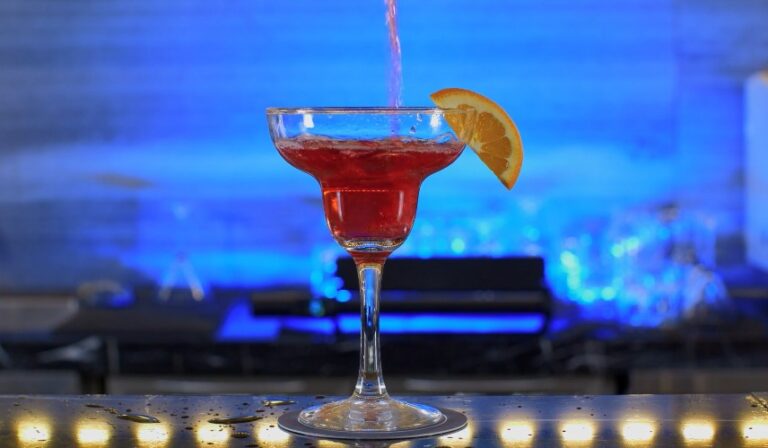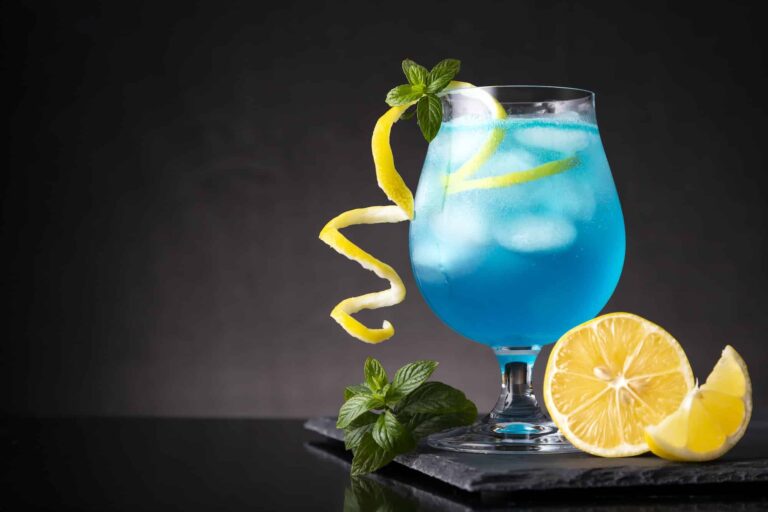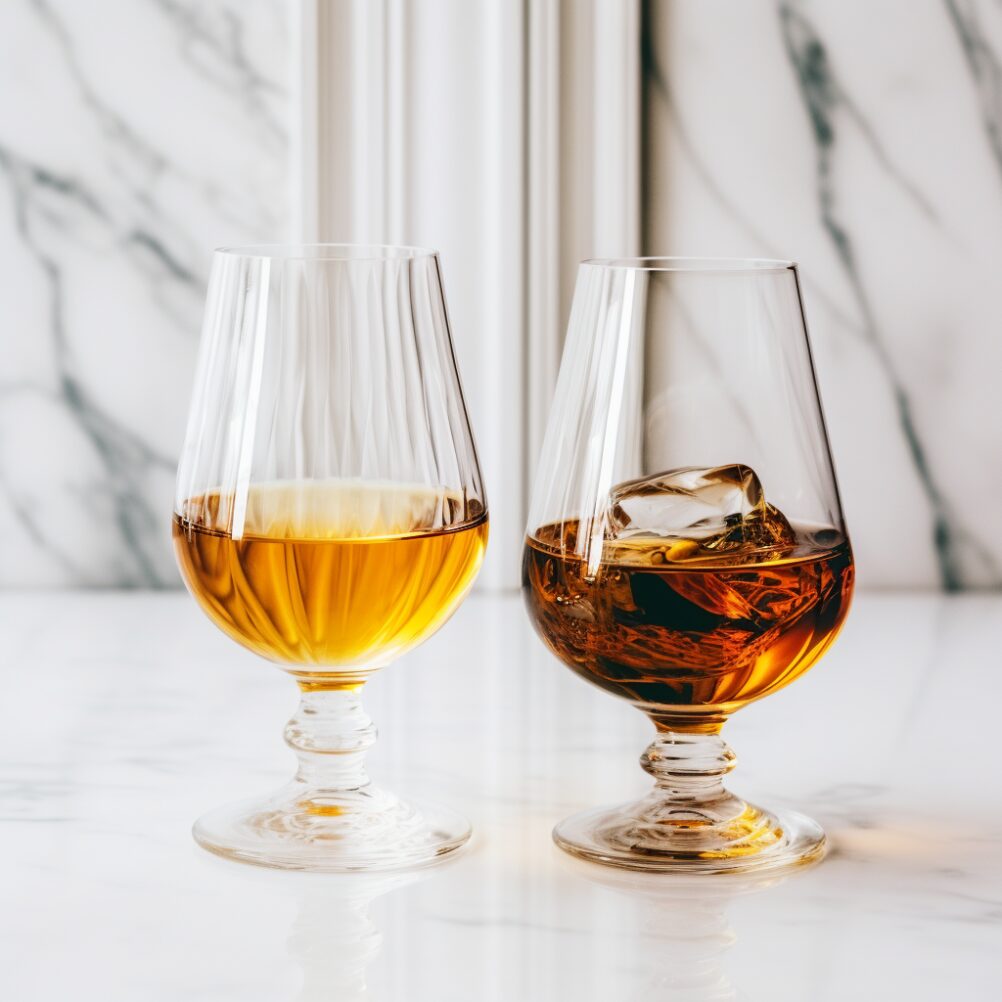Brandy and whiskey are two spirits that stand tall with legacy and strength. Each sip tells a different story—one shaped by fruit, the other by grain.
They share rich colors and complex flavors, but their origins and character are worlds apart.
One offers smooth elegance, the other bold power.
If you want to know what truly sets them apart, we are cutting straight to the truth.
Let’s Start with Key Differences
At first glance, brandy and whiskey might seem similar, both offering rich amber hues and complex flavors. However, the differences between the two run much deeper.
Brandy originates from fermented fruit juice, primarily grapes, while whiskey is distilled from fermented grain mash.
This fundamental contrast in ingredients creates two unique spirits with distinct production processes, aging techniques, and flavor profiles.
| Brandy | Whiskey | |
|---|---|---|
| Base Ingredient | Fermented fruit juice, usually grapes | Fermented grain mash (barley, corn, rye, wheat) |
| Origin | Predominantly France, Spain, and Italy | Scotland, Ireland, United States, Japan |
| Flavor Profile | Fruit-forward, smooth, and sweet | Bold, grain-driven, with smoky or oaky notes |
| Distillation | Lower proof; traditional copper pot stills | Higher proof; pot stills or continuous stills |
| Aging Requirements | Mandatory for Cognac (minimum 2 years), optional otherwise | Mandatory for most types; varies by region |
| Popular Types | Cognac, Armagnac, Pisco, Calvados, Grappa | Scotch, Bourbon, Rye, Irish, Japanese whiskey |
| Alcohol Content | Typically 35%–60% | Typically 40%–50% |
| Usage | Sipped neat, after meals, or in classic cocktails | Versatile: sipped neat, on rocks, or in cocktails |
The most common package for each is a fifth. Check out how many shots are in a fifth.
Origins and Ingredients
Both spirits are crafted with care, but their origins and base ingredients set them apart right from the start.
Brandy: Born from Fruit
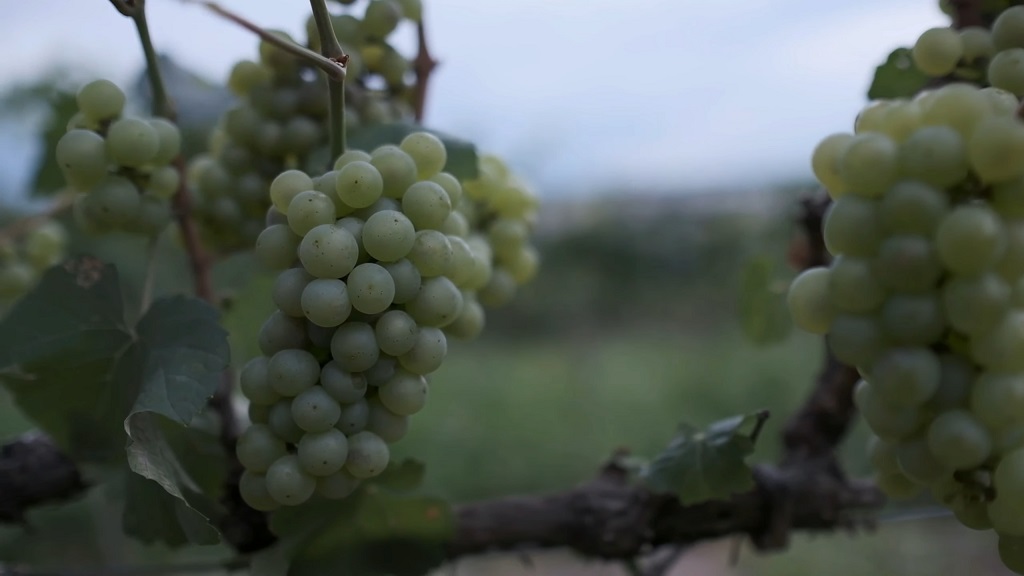
Brandy is distilled from fermented fruit juice, most commonly grapes. Regions with strong winemaking traditions, such as France, Spain, and Italy, are renowned for producing high-quality brandy. While grapes dominate, other fruits like apples, pears, peaches, and plums are also used to make regional specialties.
- Cognac: Produced in the Cognac region of France, primarily using Ugni Blanc grapes.
- Armagnac: From Gascony in France, often rustic and bold.
- Calvados: A French apple brandy from Normandy.
- Pisco: Made from grapes, primarily in Peru and Chile.
Whiskey: Rooted in Grains

Whiskey, on the other hand, comes from a mash of fermented grains. Barley, corn, rye, and wheat are the most common grains, each contributing unique flavors to the final spirit. Whiskey production began in Scotland and Ireland, but today, it is a global phenomenon.
- Scotch: Primarily made from malted barley and produced in Scotland.
- Bourbon: Made in the United States with at least 51% corn.
- Rye Whiskey: Contains at least 51% rye grain, popular in both the U.S. and Canada.
- Irish Whiskey: Typically triple-distilled for a smoother finish.
How They Are Made: Distillation and Production Methods
The production processes of brandy and whiskey differ significantly due to their base ingredients and regional traditions.
Brandy Production
- Fermentation: Fresh fruit juice is fermented to create a low-alcohol wine base.
- Distillation: The wine undergoes distillation, often in copper pot stills, to concentrate the alcohol and flavors. For Cognac, double distillation is required.
- Aging: The distilled spirit is aged in oak barrels, which add depth and complexity. Cognac must age for a minimum of 2 years, while other brandies may skip aging altogether.
- Blending: Master blenders combine different aged spirits to achieve consistent quality and flavor.
Whiskey Production
- Mashing: Grains are milled, mixed with water, and heated to extract sugars, creating a mash.
- Fermentation: Yeast is added to the mash, converting sugars into alcohol, producing a grain-based “wash.”
- Distillation: The wash is distilled at a higher proof than brandy, using pot stills (Scotland, Ireland) or column stills (United States).
- Aging: Whiskey must be aged in oak barrels. For bourbon, the barrels must be new and charred, while Scotch often uses used barrels like sherry or wine casks.
- Bottling: Whiskey is filtered, diluted to the desired strength, and bottled, often at 40% ABV or higher.
What Do Brandy and Whiskey Taste Like?
The distinct base ingredients and production processes give brandy and whiskey unique flavor profiles, making them appeal to different palates.
Brandy: Smooth, Sweet, and Fruit-Driven
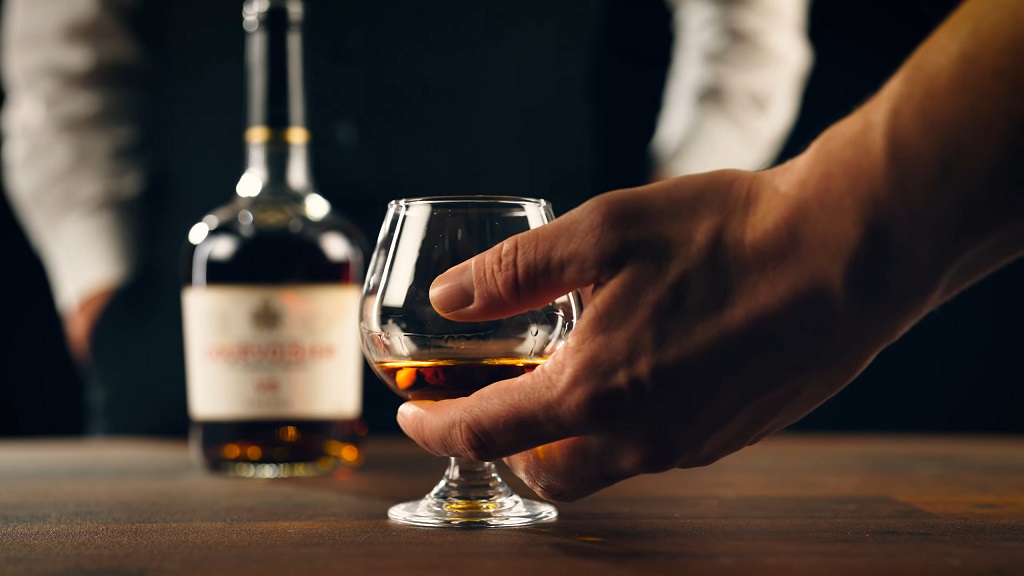
Brandy delivers a smoother, fruit-forward experience with natural sweetness. The specific flavor depends on the type of fruit, aging process, and production region:
- Cognac: Notes of dried fruits, vanilla, caramel, and subtle spice. The oak aging adds richness and depth.
- Armagnac: Bold, earthy flavors with hints of prunes, figs, and dark spices.
- Calvados: Fresh, crisp apple flavors with a hint of cinnamon and nutmeg.
- Pisco: Bright, aromatic flavors with floral and fruity notes.
Whiskey: Bold, Complex, and Grain-Driven

Whiskey flavors vary widely based on the grains, aging barrels, and production methods:
- Scotch Whisky: Smoky, peaty flavors for Islay varieties; fruity and smooth for Speyside or Highland types.
- Bourbon: Sweet and rich with notes of caramel, vanilla, and oak, thanks to corn and charred barrels.
- Rye Whiskey: Spicy and peppery with a bold, dry finish.
- Irish Whiskey: Smooth, light, and slightly sweet with subtle malt and fruit notes.
Types of Whiskey: A World of Grain Spirits
Whiskey comes in many styles, each defined by regional laws, production methods, and ingredients.
Scotch Whisky
- Made in Scotland, primarily from malted barley.
- Single Malt: Produced at one distillery using 100% malted barley.
- Blended Scotch: A mix of malt and grain whiskies.
Bourbon
- Made in the United States, with at least 51% corn in the mash bill.
- Aged in new, charred oak barrels, giving it a rich, sweet flavor.
Rye Whiskey
- Requires at least 51% rye grain.
- Known for bold, spicy, and peppery notes.
Irish Whiskey
- Triple-distilled for smoothness.
- Includes styles like Single Malt, Grain Whiskey, and Blended Irish Whiskey.
Japanese Whisky
- Inspired by Scotch, with delicate, balanced flavors and exceptional craftsmanship.
Types of Brandy: From Grapes to Fruit
Brandy has an equally rich variety of styles, showcasing the diversity of fruits and production methods.
Cognac
- Produced in the Cognac region of France.
- Double-distilled from white grapes and aged in Limousin oak barrels.
Armagnac
- Older than Cognac, produced in Gascony, France.
- Distilled in column stills for a more rustic and complex flavor.
Pisco
- A South American brandy produced in Peru and Chile.
- Distilled from grapes but unaged in wood, retaining a bright and fruity flavor.
Calvados
- Apple or pear brandy from Normandy, France.
- Aged in oak barrels for a smooth, spiced finish.
Grappa
- Italian brandy made from grape pomace (skins, seeds, and stems left after winemaking).
- Bold, earthy, and often consumed as a digestif.
Aging Process and Impact: How Time Changes Everything

Both brandy and whiskey rely on aging to enhance their flavors, but the rules and results differ.
Brandy Aging
- Not all brandies require aging, but for Cognac and Armagnac, oak barrel aging is mandatory.
- Aging terms include:
- V.S. (Very Special): Minimum 2 years in oak.
- V.S.O.P. (Very Superior Old Pale): Minimum 4 years.
- X.O. (Extra Old): Minimum 6 years (10 for Armagnac).
- Aging smooths the spirit and adds notes of vanilla, caramel, and dried fruits.
Whiskey Aging
- Whiskey must be aged in oak barrels to legally be called whiskey.
- Bourbon: Aged in new, charred oak barrels, adding bold caramel and vanilla flavors.
- Scotch: Often aged in reused barrels, such as sherry or wine casks, creating layers of complexity.
- Time allows whiskey to develop its signature flavors, absorbing notes of wood, smoke, and spice.
Popular Cocktails with Brandy and Whiskey
Both spirits serve as the foundation for classic and modern cocktails.
Brandy Cocktails
- Sidecar: Cognac, orange liqueur, and fresh lemon juice for a perfect balance.
- Brandy Alexander: Brandy, crème de cacao, and cream for a smooth, dessert-like drink.
- Pisco Sour: Pisco, lime juice, simple syrup, and egg white for a refreshing, frothy finish.
- Hot Toddy: Brandy, hot water, honey, and lemon—ideal for colder nights.
Whiskey Cocktails
- Old Fashioned: Whiskey, bitters, and sugar for a timeless drink.
- Whiskey Sour: Whiskey, lemon juice, simple syrup, and egg white for a balanced classic.
- Manhattan: Rye whiskey, sweet vermouth, and bitters—a rich and sophisticated cocktail.
- Mint Julep: Bourbon, simple syrup, and fresh mint for a refreshing summer sip.
How to Enjoy Them?

Enjoying brandy and whiskey often depends on personal preference and the occasion.
Drinking Brandy
- Neat: Served in a snifter to highlight its fruity aromas.
- After Meals: Often enjoyed as a digestif due to its smooth and refined flavors.
- In Cocktails: Brandy works beautifully in classics like the Sidecar or new creations with fruit-driven mixers.
Drinking Whiskey
- Neat or On the Rocks: Whiskey lovers often prefer to sip it straight to enjoy its full character.
- With Water: Adding a splash of water opens up the flavors, especially in high-proof whiskies.
- In Cocktails: Whiskey shines in both simple drinks, like the Old Fashioned, and more complex creations like the Sazerac.
Final Thoughts
Brandy and whiskey are two spirits with distinct origins, production methods, and flavors. Brandy delivers smooth, fruit-based sweetness, while whiskey offers bold, grain-driven complexity.
Knowing their differences helps you enjoy each one fully, whether sipping Cognac after dinner or pouring a rich glass of bourbon. Both have unique qualities that suit different tastes and occasions.
Related Posts:
- How Many Shots of Whiskey Does It Take to Get Drunk?
- The Way of the Cocktail by Julia Momosé and Emma Janzen
- Your Guide to Cocktail Shakers: Pros, Cons, and How…
- Nick and Nora Glass: A Bartender's Favorite for…
- How to Make a Perfect Negroni - The Tools and…
- Vodka Press Drink Recipe - Light and Refreshing Cocktail


